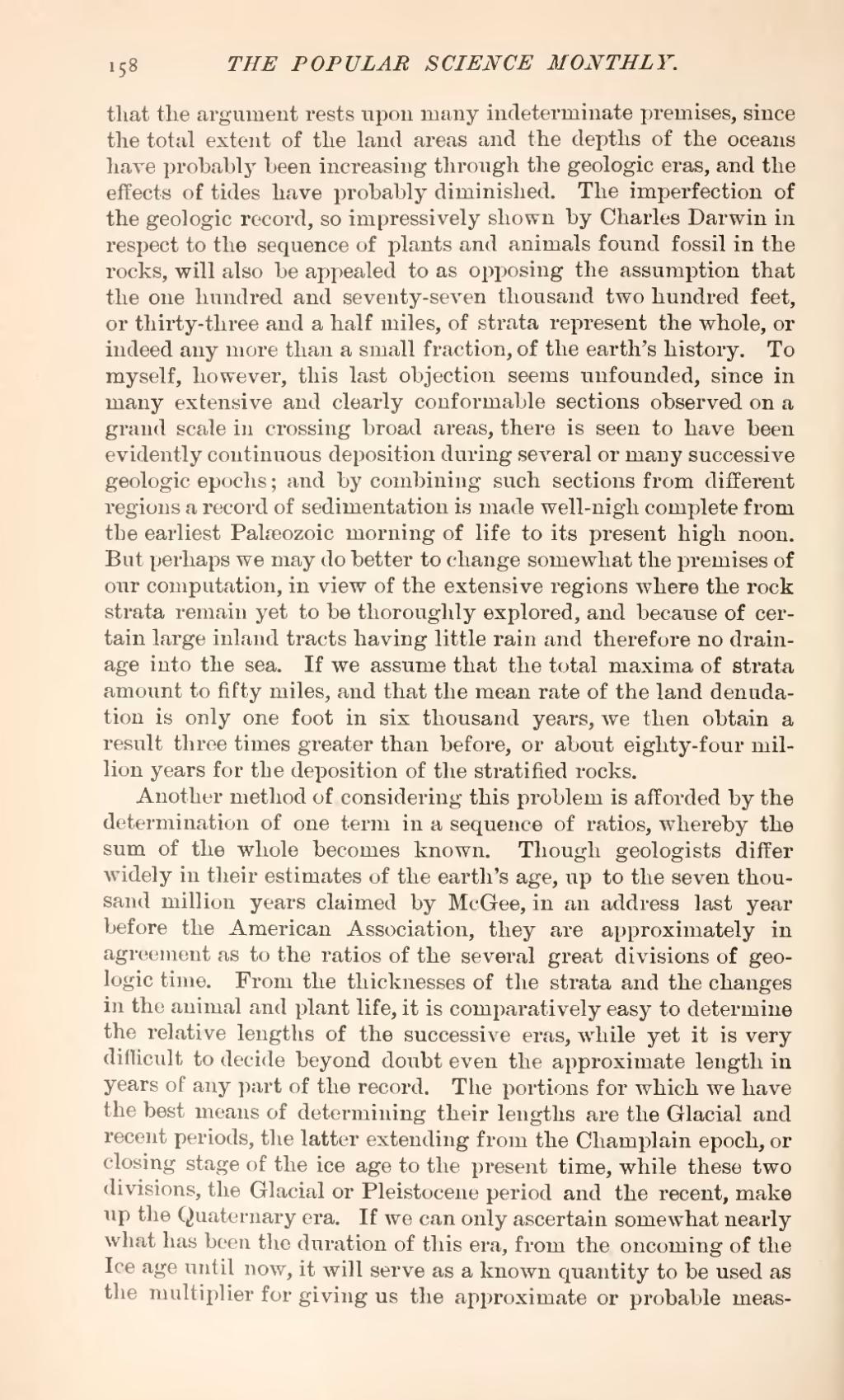that the argument rests upon many indeterminate premises, since the total extent of the land areas and the depths of the oceans have probably been increasing through the geologic eras, and the effects of tides have probably diminished. The imperfection of the geologic record, so impressively shown by Charles Darwin in respect to the sequence of plants and animals found fossil in the rocks, will also be appealed to as opposing the assumption that the one hundred and seventy-seven thousand two hundred feet, or thirty-three and a half miles, of strata represent the whole, or indeed any more than a small fraction, of the earth's history. To myself, however, this last objection seems unfounded, since in many extensive and clearly conformable sections observed on a grand scale in crossing broad areas, there is seen to have been evidently continuous deposition during several or many successive geologic epochs; and by combining such sections from different regions a record of sedimentation is made well-nigh complete from the earliest Palæozoic morning of life to its present high noon. But perhaps we may do better to change somewhat the premises of our computation, in view of the extensive regions where the rock strata remain yet to be thoroughly explored, and because of certain large inland tracts having little rain and therefore no drainage into the sea. If we assume that the total maxima of strata amount to fifty miles, and that the mean rate of the land denudation is only one foot in six thousand years, we then obtain a result three times greater than before, or about eighty-four million years for the deposition of the stratified rocks.
Another method of considering this problem is afforded by the determination of one term in a sequence of ratios, whereby the sum of the whole becomes known. Though geologists differ widely in their estimates of the earth's age, up to the seven thousand million years claimed by McGee, in an address last year before the American Association, they are approximately in agreement as to the ratios of the several great divisions of geologic time. From the thicknesses of the strata and the changes in the animal and plant life, it is comparatively easy to determine the relative lengths of the successive eras, while yet it is very difficult to decide beyond doubt even the approximate length in years of any part of the record. The portions for which we have the best means of determining their lengths are the Glacial and recent periods, the latter extending from the Champlain epoch, or closing stage of the ice age to the present time, while these two divisions, the Glacial or Pleistocene period and the recent, make up the Quaternary era. If we can only ascertain somewhat nearly what has been the duration of this era, from the oncoming of the Ice age until now, it will serve as a known quantity to be used as the multiplier for giving us the approximate or probable meas-

